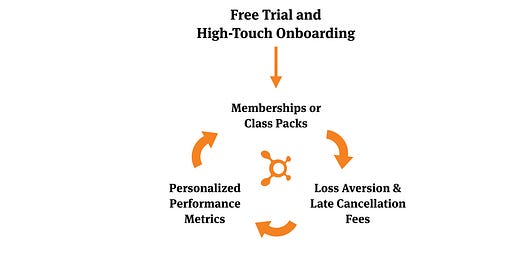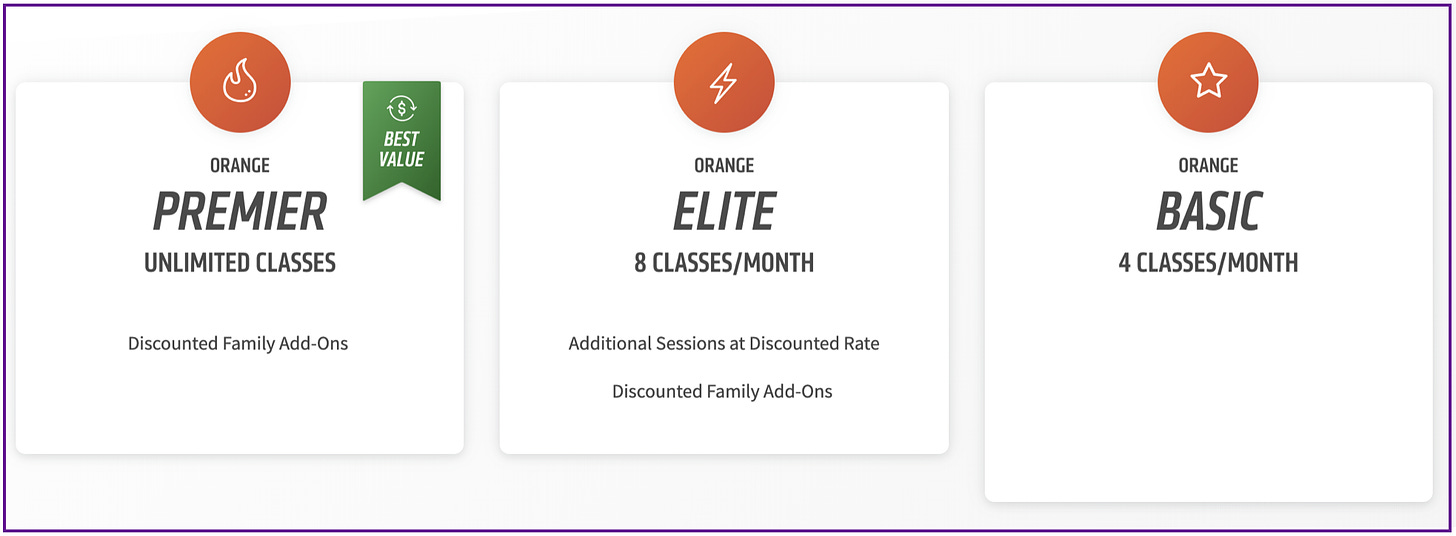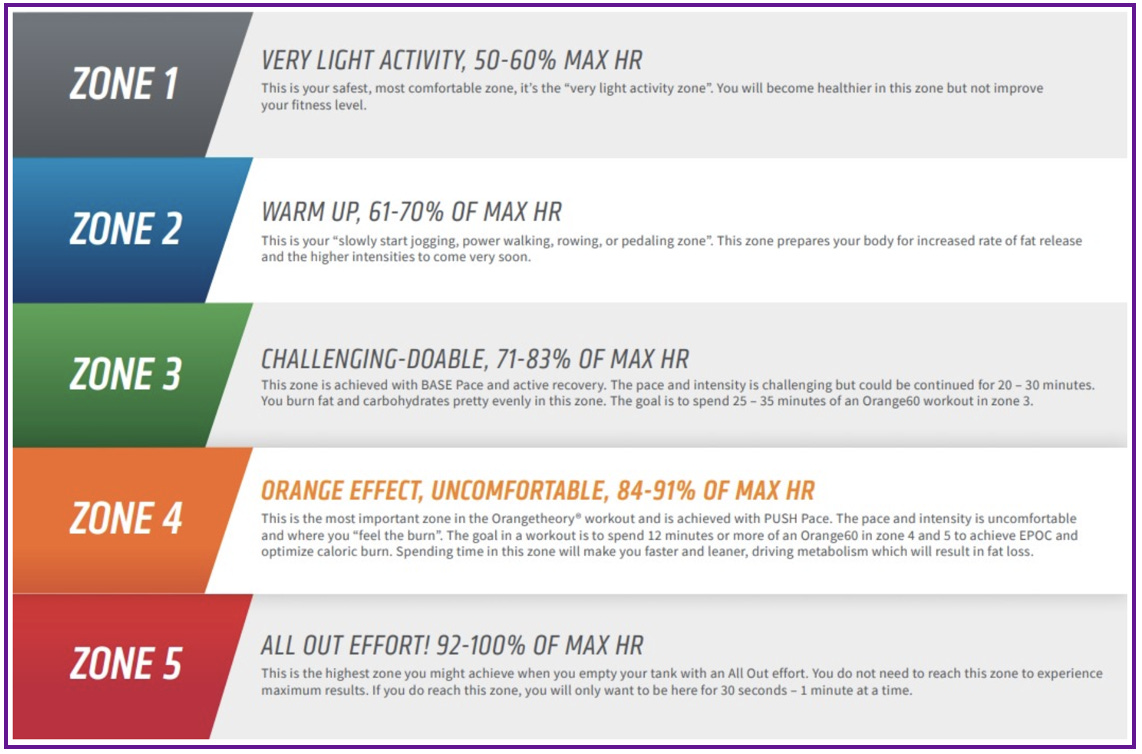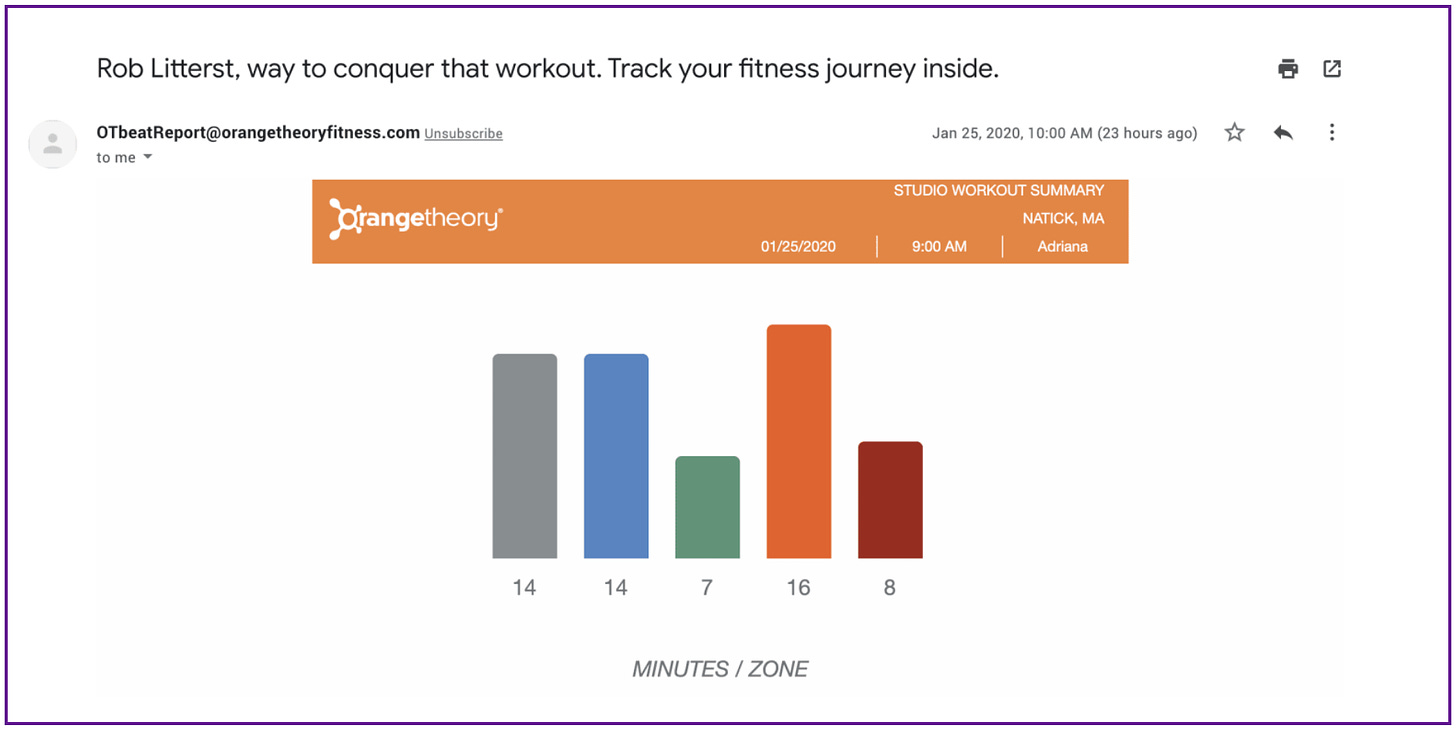Orangetheory's Enrollment Flywheel
How one of the fastest-growing fitness franchises in the world builds momentum throughout the membership funnel.
One of the more surprising developments in my life over the past few years has been joining a cult. The cult, of Orangetheory Fitness.
Besides intentional breaks for recovery, I’ve rarely missed my quota of two classes a week. Having spent previous years in and out of fitness regimens with varying levels of commitment, OTF (as we call it) is the most consistent routine I’ve ever had.
The classes are great (more on that in a bit), but there are plenty of strong fitness products on the market. I believe the success of their model is due to more than simply making members sweat. Specifically, there are structural elements of the product and packaging that drive enrollment at three key stages of the membership funnel where drop-off in momentum is most likely to occur.
The three stages are Membership Activation, Class Attendance, and In-Class Performance. To solve for stagnation at these three stages, Orangetheory has created a flywheel of enrollment that gets members to sign-up, go to class, and work their ass off.
But, you may be asking, what the hell is Orangetheory?
SaaS Pricing is hard. PricingSaaS is your cheat code.
Monitor competitors, track real-time benchmarks, discover new strategies, and more.
Orangetheory Fitness can broadly be described as a franchise of boutique fitness studios offering high-intensity-interval training (HIIT). In classes, members rotate between the treadmill, rowing machine, and weight-room.
Each class is led by a coach (e.g., personal trainer), who guides members through the workout-of-the-day handed down by corporate. That means every studio across the world does the same workout on any given day, but, no template is offered twice, which keeps the classes fresh.
Orangetheory is a private company (for now), so member retention numbers aren’t public. However, the organization launched in 2010, has grown to 1,320 locations (with 500 more in the pipeline), and have not shuttered a single studio. After seeing their strong member retention first-hand, I started wondering why the model works so well.
To drive enrollment from the start, Orangetheory uses a high-touch onboarding process that guides members into their flywheel of enrollment.
Activating Members: Free Trial and Flexible Options
Orangetheory advertises the first class as free, but there’s a catch – you have to sign up for a membership afterward. Otherwise, you have to pay, and it’s not cheap - prices can range from $25-$40 depending on the location. The free trial drives prospective members through the door but never results in too many new faces at a given glass since the high price-tag filters out those that are merely curious.
For the first class, you have to arrive thirty minutes early for a light orientation. An associate walks through the class structure and technology, provides a complimentary heart-rate monitor and asks about current and past fitness habits. At the start of the class, the coach will ensure you’re set-up correctly, and will continuously check-in throughout. Afterward, they’ll review your personal stats and add context to the numbers. This high-touch onboarding experience follows a classic sales tactic:
Tell them what you’re going to tell them. Tell them. Then tell them what you just told them.
For Orangetheory, they tell you what you’re going to do, let you do it, then tell you what you just did, using repetition, along with your personal data (and exhaustion) as proof that their methodology works. As you bask in your accomplishment and compare the intensity of the class to your last workout (likely less intense), they walk you through membership options.
This is the first step in the Enrollment Flywheel. Orangetheory exclusively offers memberships and class-packs. Memberships are month-to-month and start at 4 classes per month, while class packs start at 10. This model serves Orangetheory by ensuring new members have to invest in multiple classes and also serves members by giving flexible, month-to-month payment options, with the ability to quit at any time.
While activating new members is critical, it’s just the beginning. The next step in the membership funnel is class attendance. Put simply, how does Orangetheory handle the inevitability that sometimes, members just don’t want to workout?
Driving Attendance: Loss Aversion & Skin in the Game
There are two key ways Orangetheory drives class attendance, and the first is tied to their membership model. By only offering memberships and class-packs, they force members to purchase multiple classes at once, using loss aversion to drive members to use the classes they have already paid for. While loss aversion can be powerful, it doesn’t solve for the last minute “I just don’t feel like it today” excuse. That’s where late cancellation fees come in. First, a bit more context…
Members cannot just show up to any Orangetheory class - they need to sign up in advance, either through the mobile app or by calling the studio. If the class is already full, members can join a waitlist. Sometimes, I’ll join a waitlist that’s 20-deep, and will end up getting in a day or two later when the class rolls around.
What happens, is members sign up for a bunch of classes at once as an insurance policy, then as their weekly agenda shakes out, they cancel classes that no longer work with their schedule. If members were able to cancel at the last minute without consequences, it would lead to vacant spots, leaving the studio scrambling to find replacement members at the last minute. It would also lead to less predictable revenue, anathema to subscription businesses.
To combat this, Orangetheory enforces a late-cancellation penalty. Members who cancel within 8 hours of a class are charged a fee, typically more than half the cost of the class - for me, it’s $12. This way, if members flake out at the last minute, Orangetheory recovers something. Many times, if the late cancel is far enough in advance, another member will fill the spot, so the studio gets the $12 cancellation fee along with a full class credit.
Now, there are obviously a couple of ways to interpret this policy. My wife, for instance, thinks it’s total bullshit – a way for Orangetheory to nickel and dime members, especially when they can often fill the empty spots. While I see her side and agree there’s a certain degree of self-preservation, I like to think the policy continues the flywheel of enrollment by giving members skin in the game. The late cancellation fee ensures there are consequences if members flake out at the last minute, and the cost is just high enough that most will go out of their way to avoid paying it.
Anecdotally, it works. My wife and I go to morning classes at 6:30 and have developed a nervous tic of checking our phones at 10:00 pm to make sure we’re not signed up for the following morning’s class if we don’t plan on attending. This comes from our own experiences of feeling lazy, deciding to sleep in, and eating the late-cancellation fee. The combination of lighting $12 on fire and the guilt of not working out combine to form a weight on your conscience that makes you unlikely to do it often.
Getting members to attend classes brings us to the last stage of the membership funnel, in-class performance. This is where Orangetheory shines the most. By now you’re probably wondering, what makes these classes so great? Let’s dive in.
Maximizing Effort: Gamification and Personalized Metrics
While HIIT isn’t exactly a novel idea in itself these days, when combined with technology and personalized data, it forms Orangetheory’s “secret-sauce”. Members wear a proprietary heart-rate monitor and can track their own personal progress on a giant flat-screen in the middle of the studio. On the screen, members track their heart rate by “zone”. These zones escalate in intensity and categorize your effort based on the percentage of your personal maximum heart rate.
The Orangetheory model is built on the principle of EPOC or excess post-exercise oxygen consumption. The idea is that spending at least 12 out of 60 minutes in the orange or red zone allows members to not only burn 500-1,000 calories during the class but to continue burning calories at 15%-20% higher than usual for the following 36 hours. This is also known as the afterburn effect and it has several downstream implications.
First, it gives members an in-class target to aim for. When exercising on your own, or even in other class settings, there’s rarely a prescribed benchmark that guarantees a successful workout. The 12-minute target assures success, holds members accountable and adds a sense of gamification to the experience.
Second, since performance is personalized, there’s no competition among members. While you may occasionally spot the person next to you eyeing your weights or treadmill speed, it’s pretty rare that you end up in a serious battle with your neighbor. This is critical to the community-aspect of Orangetheory. While the workouts are intense, each individual goes at their own pace, broadening the appeal to a wide range of potential members.
Lastly, the afterburn effect promotes recovery time by continuing to “work for you” for a day after the workout. The promise of continuous calorie-burning gives members a reward for their effort and incentivizes them to push themselves in the moment.
Another critical factor is the terminology. A minute spent in the orange or red zone is referred to as a “splat point”, with the goal of reaching 12 splat points per class. This is where things start to feel cultish. Giving members a shared language helps build community, and similar to other fitness communities like Crossfit, Orangetheory uses an invented lexicon to make members feel like they’re part of something bigger than themselves.
The final way Orangetheory uses personalized data as an asset is post-class emails. After every class, the studio sends a personalized email with a summary of your stats from the individual workout, along with aggregate stats over the past week, month, year, and all time.
The email reminds you of what you just accomplished and motivates you to get back and do it all over again in the next class. More importantly, opening that email will immediately put you in a good mood - further building a positive association with Orangetheory.
The Orangetheory Enrollment Flywheel
Orangetheory’s Enrollment Flywheel serves to build momentum throughout the membership funnel and cultivate an active member community. The flywheel hinges on a high-quality product - their strongest asset.
They drive members into the flywheel by structuring membership options to drive activation - allowing month-to-month flexibility but making members commit to several classes. They then use loss aversion and late cancellation fees to hold members accountable and drive attendance. Lastly, they use an established goal and personalized performance metrics to maximize in-class effort.
The end result is happy members that swear by the workouts and tell their friends, who then proceed to go through the flywheel all over again.
Enjoying Good Better Best?
If you enjoyed this post, I’d love it if you hit the “like” button, that way I’ll know which posts are resonating the most!
If you have thoughts or feedback, I’d love to hear it!
Lastly, if you’re enjoying Good Better Best and have friends or colleagues who would enjoy a weekly packaging case study, I’d be thrilled if you shared this with them!







